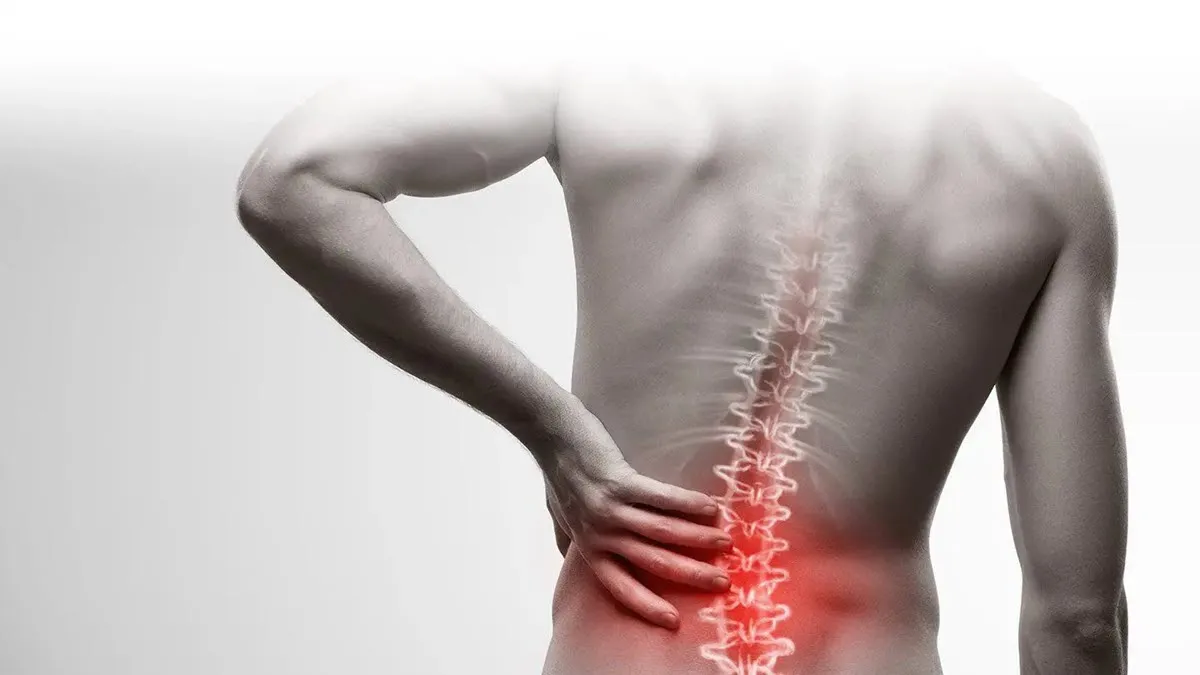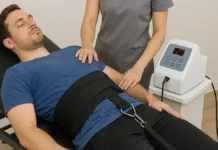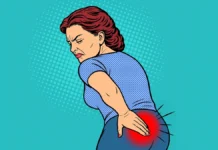Introduction
Lower back pain, a silent burden afflicting millions worldwide, is frequently linked to issues of spinal stability. Osteopathy, recognized as a holistic health approach, emerges as a natural solution for alleviating this pain by restoring the body’s structural balance. In this comprehensive guide, we will delve into the connections between osteopathy and lower back pain, drawing insights from scientific research and clinical studies to elucidate how this discipline facilitates the regaining of optimal spinal stability.
Osteopathy is gaining prominence as an effective method for relieving and treating lower back pain, providing a holistic avenue for restoring spinal stability. Lower back pain, often ascribed to muscular imbalances, joint tension, or postural issues, can significantly impact the quality of one’s daily life.
Osteopaths specializing in lower back pain treatment adopt a personalized approach, meticulously examining posture, spinal mobility, and potential structural misalignments. By pinpointing sources of tension and imbalance, they apply gentle manual techniques, including joint manipulation, stretching, and massage, aiming to restore equilibrium and enhance mobility.
The objective of osteopathy in the realm of lower back pain transcends mere symptom management. By fostering blood circulation, easing tight muscles, and promoting the body’s natural healing processes, this approach not only provides immediate relief but also aids in preventing future occurrences.
The spinal stability achieved through osteopathy often coincides with improvements in flexibility, posture, and overall back function. The collaborative efforts between osteopaths and other healthcare professionals, such as physiotherapists, facilitate the development of comprehensive and personalized treatment plans. This integrated approach aims to ensure lasting relief from lower back pain, tailored to individual needs.
The Foundations of Osteopathy
Osteopathy, founded on the fundamental principle that the body operates as a functional unit with interdependent structure and function, has its roots in the visionary work of Andrew Taylor Still. The development of this holistic approach in the 19th century marked a paradigm shift, envisioning the body not as a collection of isolated parts but as a dynamic system capable of self-regulation and self-healing.
Andrew Taylor Still, a pioneering figure in the field of medicine, challenged conventional thinking by conceptualizing the body as an intricately interconnected entity. He recognized that the well-being of an individual depends on the harmonious interplay between the structure and function of the body. This revolutionary perspective laid the foundation for osteopathy, emphasizing a holistic understanding of health that transcends the mere alleviation of symptoms.
The core tenet of osteopathy revolves around the belief that the body possesses innate mechanisms for self-regulation and healing. Osteopathic practitioners view the body as a self-sufficient entity, capable of maintaining balance and recovering from ailments when provided with the right conditions. This contrasts with approaches that primarily focus on treating symptoms without delving into the underlying causes of dysfunction.
Osteopathy practitioners, guided by the principles laid out by Still, engage in a thorough examination to identify dysfunctions that disrupt the body’s delicate equilibrium. This involves an in-depth assessment of not just the symptomatic areas but a holistic evaluation of the entire body. By understanding the interconnectedness of various bodily structures and functions, osteopaths aim to uncover the root causes of imbalances that may manifest as pain, discomfort, or reduced functionality.
The interventions employed by osteopathic practitioners are designed to restore balance and enhance the body’s ability to self-regulate and heal. Manual techniques, such as joint manipulations, soft tissue mobilization, and targeted exercises, are utilized to address identified dysfunctions. Rather than just addressing the symptoms, these interventions target the underlying issues, aligning with the principle that structure and function are interdependent.
Osteopathy’s holistic approach extends beyond the immediate alleviation of symptoms, focusing on the overall well-being of the individual. By addressing dysfunctions and restoring balance, osteopathy aims to empower the body to function optimally, promoting not just recovery but also long-term health and vitality.
In conclusion, osteopathy stands as a testament to Andrew Taylor Still’s visionary approach to healthcare. The principles of viewing the body as a functional unit, capable of self-regulation and self-healing, continue to guide osteopathic practitioners in their quest to identify and correct dysfunctions that disrupt the delicate balance of the body. This holistic perspective on health marks osteopathy as a dynamic and patient-centered approach that recognizes the profound interdependence of structure and function within the human body.
Lower Back Pain: A Common Condition
Lower back pain, characterized as discomfort situated between the rib cage and the lower back, is a pervasive issue that significantly impacts the daily lives of a considerable portion of the population. The extent of this challenge is illuminated by a comprehensive study conducted by Hoy et al. (2012) and published in the esteemed journal “Annals of the Rheumatic Diseases.” According to their findings, the global prevalence of lower back pain is estimated to be a staggering 9.4% of the total population.
The prevalence figures outlined in the study underscore the magnitude of the problem and emphasize the urgent need for effective approaches to alleviate lower back pain. The fact that almost one-tenth of the global population experiences this form of discomfort highlights the widespread nature of the issue. Lower back pain not only leads to physical discomfort but also imposes limitations on daily activities, affecting individuals across various age groups and demographics.
The study by Hoy et al. (2012) provides a valuable insight into the global landscape of lower back pain, emphasizing the importance of addressing this health concern on a broader scale. The figures serve as a call to action for healthcare professionals, researchers, and policymakers to explore and implement effective strategies for the prevention and management of lower back pain.
Given the pervasive nature of lower back pain, there is a critical need for a multifaceted approach that considers both the prevention and treatment aspects. This may involve lifestyle modifications, ergonomic considerations, and the incorporation of evidence-based interventions to provide relief to those currently experiencing lower back pain and reduce the risk of its occurrence in the future.
Furthermore, the study’s findings highlight the significance of raising awareness about lower back pain and its potential impact on individuals and societies. Education campaigns can play a pivotal role in promoting preventive measures, encouraging early intervention, and reducing the overall burden of lower back pain on healthcare systems.
In conclusion, lower back pain, affecting the area between the rib cage and the lower back, poses a substantial challenge to a significant portion of the global population. The study by Hoy et al. (2012) sheds light on the widespread prevalence of this issue, emphasizing the pressing need for effective approaches to alleviate and prevent lower back pain. As we strive for a healthier and more pain-free world, addressing the complexities of lower back pain on a global scale becomes imperative for enhancing the overall well-being of individuals and communities.
Osteopathy as a Natural Solution
Osteopathy stands out as a natural and effective solution for tackling lower back pain at its core, as evidenced by a randomized controlled study conducted by Licciardone et al. (2013), published in “The American Journal of Medicine.” The study demonstrated significant improvements in both pain levels and physical function among patients suffering from chronic lower back pain after undergoing regular osteopathy sessions.
This research underscores the power of osteopathy in addressing the complexities of chronic lower back pain. Rather than merely addressing symptoms, osteopathy aims to understand and treat the root causes of the pain. Osteopathic practitioners adopt a personalized approach, recognizing that each patient’s experience is unique. Through a thorough assessment of mobility, posture, and muscle tension, practitioners gain insights into the specific factors contributing to the individual’s lower back pain.
Armed with this personalized understanding, osteopathic practitioners employ manual techniques to restore balance to the body and alleviate pressure on the spine. Joint manipulations and stretching are integral components of these interventions. By focusing on these targeted areas, osteopathy seeks not only to provide immediate relief but also to address the underlying issues contributing to lower back pain. This holistic approach aligns with the fundamental principles of osteopathy, which views the body as an interconnected system where structure and function are interdependent.
The study by Licciardone et al. (2013) reinforces the efficacy of osteopathy in bringing about meaningful improvements in chronic lower back pain. The participants in the study experienced not only a reduction in pain but also an enhancement in their physical functioning, highlighting the comprehensive impact of osteopathic interventions.
Osteopathic care goes beyond the conventional treatment of symptoms by delving into the intricate relationship between the musculoskeletal system and overall health. By restoring balance and addressing the root causes of lower back pain, osteopathy offers a natural and sustainable solution. The personalized approach taken by osteopathic practitioners ensures that the treatment is tailored to the individual, recognizing the unique aspects of each patient’s condition.
As the findings of studies like Licciardone et al. (2013) continue to illuminate the efficacy of osteopathy, it becomes evident that this modality holds promise as a preferred approach for those seeking a holistic and enduring solution to chronic lower back pain. Osteopathy’s commitment to understanding the individual and addressing the root of the problem positions it as a valuable and natural choice in the landscape of lower back pain management.
Spinal Stability: A Central Objective
Maintaining spinal stability is paramount for ensuring the optimal functioning of the body, and a study by Panjabi (2003), featured in “The Journal of Electromyography and Kinesiology,” underscores the pivotal role of lumbar stability in preventing pain and spinal dysfunction. Osteopathy, in alignment with this perspective, emerges as a fitting approach, dedicated to the restoration of stability through interventions that target muscles, joints, and surrounding tissues.
Panjabi’s (2003) study delves into the intricate relationship between lumbar stability and the prevention of pain and dysfunction within the spine. The findings emphasize the interconnectedness of various components in the lumbar region, emphasizing the need for stability to uphold the integrity of the spine. Recognizing the significance of this research, osteopathy adopts a tailored approach to address issues related to spinal stability, positioning itself as a valuable modality in the realm of musculoskeletal health.
Osteopathic practitioners employ diverse strategies to enhance spinal stability, incorporating muscle release techniques and specific exercises aimed at improving posture and muscular coordination. These targeted interventions serve to alleviate tension, improve muscle tone, and enhance the overall support system for the spine. By addressing the root causes of instability, osteopathy contributes to creating a foundation for the body to heal and function optimally.
Muscle release techniques employed by osteopaths involve hands-on manipulation to release tension in the muscles surrounding the spine. This not only provides immediate relief but also lays the groundwork for more sustained stability. Additionally, specific exercises prescribed by osteopathic practitioners are designed to strengthen the core muscles, improve posture, and enhance overall muscular coordination. This holistic approach aims not only to address existing issues but also to prevent future occurrences of spinal instability.
The targeted interventions utilized by osteopathic practitioners are pivotal in minimizing stress on the lumbar spine. By creating an environment conducive to healing, osteopathy facilitates the restoration of spinal stability and, consequently, optimal functioning of the body. This aligns seamlessly with Panjabi’s (2003) research, as osteopathy embraces the understanding that spinal stability is fundamental to preventing pain and dysfunction, fostering a proactive and patient-centered approach to musculoskeletal health.
Integration of Psychosocial Factors
Osteopathy stands out as a comprehensive approach to lower back pain, acknowledging not only the physical aspects but also the intricate interplay of psychosocial factors. A pivotal study by Franke et al. (2015), featured in “The Clinical Journal of Pain,” sheds light on the positive impact of osteopathic approaches in addressing not just the symptoms but also pain perception and the overall quality of life for patients grappling with lower back pain.
The study underscores the significance of integrating lifestyle advice and stress management techniques into osteopathic care. By doing so, the approach takes a holistic stance, recognizing the multifaceted nature of lower back pain. The findings suggest that these interventions can have a tangible positive influence, not just on the physical well-being of patients but also on their mental and emotional states. This holistic perspective emphasizes the importance of considering the patient as a whole entity, acknowledging the complex interaction between physical health, mental well-being, and the environment in which they live and work.
Osteopathy, in its holistic approach, goes beyond merely addressing the symptoms. It delves into the root causes of lower back pain, taking into account lifestyle choices, stress levels, and environmental factors that might contribute to the discomfort experienced by individuals. Osteopathic practitioners, acting as advisors in this holistic journey, provide personalized recommendations tailored to each patient’s unique circumstances. This individualized approach recognizes that there is no one-size-fits-all solution, and the nuances of each person’s life must be considered for a complete and lasting recovery.
The holistic ethos of osteopathy aligns with the evolving understanding of healthcare, where the mind-body connection is increasingly recognized as integral to overall well-being. Osteopathic care becomes a partnership between practitioner and patient, with the practitioner guiding not only the physical aspects of recovery but also offering insights and strategies for managing the psychosocial elements that may exacerbate or perpetuate lower back pain.
In conclusion, the study by Franke et al. (2015) illuminates the holistic essence of osteopathy, emphasizing its role in addressing not just the physical symptoms but the broader factors influencing lower back pain. This comprehensive approach, considering the patient as a whole, highlights the intricate interplay between the physical, the mental, and the environmental aspects of health. Osteopathic practitioners, through their advisory role, contribute significantly to the promotion of complete and lasting recovery, making osteopathy a valuable and patient-centered approach in the management of lower back pain.
Conclusion
Osteopathy has emerged as a promising and scientifically supported option for the treatment of lower back pain, focusing on the restoration of spinal stability. The effectiveness of this approach is reinforced by notable research studies conducted by Licciardone et al. (2013) and Panjabi (2003), both of which contribute to the growing body of evidence supporting osteopathy as a natural solution for alleviating lower back pain and fostering lasting recovery.
The study by Licciardone et al. (2013) delves into the efficacy of osteopathic manipulative treatment (OMT) in patients with chronic low back pain. The findings indicate a significant reduction in pain severity and an improvement in physical functioning, underscoring the positive impact of osteopathy on individuals grappling with persistent lower back discomfort. Additionally, Panjabi’s (2003) work complements this perspective by emphasizing the importance of spinal stability in the context of lower back pain. The research underscores the interconnectedness of various spinal components and how restoring stability can contribute to overall pain relief and functional improvement.
Osteopathy takes a multifaceted approach to address lower back pain, incorporating manual techniques, personalized exercises, and holistic advice. The hands-on manual techniques employed by osteopaths aim to restore musculoskeletal balance, alleviate tension, and enhance the body’s natural healing processes. Personalized exercises catered to an individual’s specific needs and condition play a crucial role in strengthening supportive structures and preventing future episodes of lower back pain. The holistic advice provided by osteopaths encompasses lifestyle modifications, stress management, and ergonomic considerations, fostering a comprehensive and sustainable approach to well-being.
This holistic and scientifically based approach reinforces the legitimacy of osteopathy as a natural and effective solution for those seeking relief from lower back pain. By addressing the root causes and promoting overall spinal stability, osteopathy not only targets the symptoms but also contributes to the long-term well-being of individuals. As awareness of the benefits of osteopathy continues to grow, it is poised to play a pivotal role in enhancing the quality of life for those grappling with lower back pain, offering a pathway to lasting recovery.
References
- Hoy, D., March, L., Brooks, P., et al. (2012). The Global Burden of Low Back Pain: Estimates from the Global Burden of Disease 2010 Study. Annals of the Rheumatic Diseases, 73(6), 968–974.
- Licciardone, JC, Minotti, DE, Gatchel, RJ, Kearns, CM, Singh, KP (2013). Osteopathic Manual Treatment and Ultrasound Therapy for Chronic Low Back Pain: A Randomized Controlled Trial. The American Journal of Medicine, 126(11), 11–1101.
- Panjabi, M. M. (2003). Clinical Spine Surgery: A Spinal Stability Basis for Defining Treatment Outcomes. The Journal of Electromyography and Kinesiology, 13(4), 371–377.
- Franke, H., Franke, J.D., Fryer, G. (2015). Osteopathic Manipulative Treatment for Low Back Pain: A Systematic Review and Meta-Analysis of Randomized Controlled Trials. The Clinical Journal of Pain, 31(2), 172–187.

























